This article was medically reviewed by Jonas DeMuro, MD. Dr. DeMuro is a board certified Pediatric Critical Care Surgeon in New York. He received his MD from Stony Brook University School of Medicine in 1996. He completed his fellowship in Surgical Critical Care at North Shore-Long Island Jewish Health System and was a previous American College of Surgeons (ACS) Fellow.
There are 9 references cited in this article, which can be found at the bottom of the page.
wikiHow marks an article as reader-approved once it receives enough positive feedback. In this case, 100% of readers who voted found the article helpful, earning it our reader-approved status.
This article has been viewed 50,216 times.
Studies show that arthroscopic knee surgery is performed on almost 1 million people annually in the United States.[1] During the relatively quick procedure, the inside of the knee joint is cleaned up and mended with the aid of a pencil-sized camera, which allows for a more accurate diagnosis. Due to the small incision and reduced damage to surrounding muscles, tendons and ligaments, healing time after arthroscopic surgery is generally less than conventional open-knee surgery. However, experts note that following a rigorous post-op routine can help you heal fully from your knee surgery.[2]
Steps
Following Initial Instructions
-
1Listen to your surgeon's instructions. Following your arthroscopic knee surgery, it's important to do what your doctor thinks is most appropriate for the best possible recovery. Your knee may not end up being perfect, but following specific advice about controlling inflammation and pain, as well as stimulating healing, will lead to the best outcome for your particular injury.
- Almost all arthroscopic knee surgery is done on an outpatient basis and lasts only a few hours at most.[3] Arthroscopy can be performed under local, regional, or general anesthesia, which prevents you from feeling pain during the surgery.
- The most common conditions that warrant arthroscopy of the knee are: torn meniscus cartilage, pieces of cartilage within the joint space (known as "joint mice"), torn or damaged ligaments, chronically inflamed joint lining (called synovium), misaligned kneecap (patella) or removal of cysts behind the knee.[4]
-
2Take medications as directed. Your doctor will recommend medications mainly to control pain and inflammation, but possibly also to deter infections and/or blood clots depending on your diagnosis, age, and overall health condition. Be careful not to take any medications on an empty stomach, as they can irritate the lining of your stomach and increase the risk of stomach ulcers.[5]
- Non-steroidal anti-inflammatories (NSAIDs) such as ibuprofen, naproxen or aspirin help you deal with inflammation and pain.
- Analgesics such as opioids, diclofenac and acetaminophen help you to get relief from pain, but not inflammation.
- Antibiotics are prescribed to prevent infections, whereas anticoagulants prevent blood clots.
Advertisement -
3Elevate your leg while resting. To help prevent inflammation in your knee naturally, elevate your leg higher than your heart level by using pillows to support the leg while you rest. This will help blood and lymph fluid return into circulation as opposed to collecting in your lower leg or knee. It's easier to elevate your leg while lying on the couch instead of sitting in a chair.
- Total bed rest is not a good idea for any type of musculoskeletal injury because some movement (even just limping around the house) is needed to stimulate blood flow and healing. As such, some rest is good, but complete inactivity is counterproductive.
-
4Apply ice around your knee. The application of ice is an effective treatment for essentially all acute musculoskeletal injuries because it restricts blood vessels (reducing inflammation) and numbs nerve fibers (reducing pain).[6] Cold therapy should be applied above and around the scar from the operation for about 15 minutes every 2-3 hours for a couple of days, then reduce the frequency as the pain and swelling subside.
- Compressing the ice against your knee with a bandage or elastic support will also help control the inflammation and limit swelling.
- Always wrap ice or frozen gel packs in a thin towel in order to prevent frostbite on your skin.
-
5Maintain proper dressage care. You will leave the hospital with a sanitized dressing covering your knee, which will absorb any blood that leaks from the wound. Your surgeon will tell you when you can shower or bathe, and when you should change the dressing in order to reduce the likelihood of infection.[7] The main intention is to keep the surgical incision clean and dry. Using some antiseptic solution on the wound as you change the bandage is a good idea.
- In most cases, you'll be able to fully wash your body about 48 hours after surgery.
- Common antiseptic solutions include iodine, rubbing alcohol and hydrogen peroxide.
- Check with your surgeon before applying anything to the wound. For example, iodine can impede wound healing and has fallen out of favor with some surgeons
-
6Beware of signs of infection. Signs of infection post-surgery include increased pain and swelling near the incision, drainage of pus and/or red streaks extending from the affected area, fever and lethargy. If any of these signs manifest, then see your doctor immediately.
- Your doctor will treat your infection with systemic antibiotics and local antiseptic solutions.
- In more extreme cases, your infected wound may have to be drained of the pus and fluid.
Resting the Knee
-
1Take it easy during the first few days. Arthroscopic surgery may alleviate most of your knee pain almost immediately, but be very careful and resist the urge to participate in any strenuous activity during the first few days or so to allow for healing. Any exercise during the first few days post surgery should be very mild and focused on leg muscle contractions and mobilization without weight bearing, such as slowly raising your leg while lying on your bed or sofa.[8]
- After a few days, focus on regaining your balance and coordination by putting more weight on your leg, but support yourself with a chair or against the wall in case you lose your balance.
- Complete inactivity (such as bed rest) is not recommended post surgery — muscles and joints need to move and get ample blood flow in order to heal.
-
2Use crutches. Most likely you'll need to take some time off from your job, especially if it involves much standing, walking, driving or lifting. Recovery from simple arthroscopic procedures is usually relatively fast (a few weeks), but you may need to use crutches during that time.[9] If parts of your knee have been repaired or rebuilt, you may not be able to walk without crutches or a knee brace for several weeks, and full recovery may take several months to a year.
- Make sure your crutches fit your height, otherwise you might develop a shoulder injury.
-
3Alter your routine at work. If you have a physical job, then talk to your boss about switching to something less demanding, if possible. For example, maybe you can do something more sedentary at the office or work from home on the computer. Even driving is typically restricted from 1-3 weeks after an arthroscopic knee procedure, so merely getting to work might be very difficult.[10]
- When you'll be able to drive depends on: the knee involved, whether your car is manual or automatic, the nature of the procedure, your level of pain, and whether you are using narcotic pain medications.
- If your right knee is involved (which is needed to press the gas and brake pedals), expect to be restricted from driving for a longer duration.
Rehabilitating
-
1Start with non-weight-bearing exercise. After a few days, depending on your pain level, it should be safe to do some exercises while laying on the floor or bed. Regular exercise to restore your knee mobility and strength is necessary, and for the most part, it can be carried out at home.[11] Your orthopedic surgeon may recommend that you exercise your leg for approximately 20-30 minutes, 2-3x daily. Start with muscle contractions around the knee without actually flexing the knee joint very much.
- Contract your hamstring muscles: lay down or sit with your knees bent to about 10 degrees or so; pull your heel against the floor, tightening the muscles in the back of your thigh as you do so; hold for 5 seconds, then relax; repeat 10x.[12]
- Contract your quadricep muscles: lay on your stomach with a towel rolled under the ankle of your recuperating knee; push your ankle down against the towel roll — your leg should straighten out as much as possible; hold for 5 seconds, then relax; repeat 10x.[13]
-
2Progress to weight bearing exercise. Once you've lightly worked the muscles surrounding the knee with isometric contractions, try some weight bearing ones while standing. As you increase the intensity of your exercising, you may experience some temporary setbacks — if your knee swells up or starts to ache after a particular exercise, stop the activity until your knee settles down.
- Partial squat while holding onto a chair: hold onto the back of a sturdy chair or countertop with your feet 6-12 inches from the chair or counter. Do not bend all the way down. Keep your back straight and hold for 5-10 seconds. Slowly come back up, relax and repeat 10x.[14]
- Standing quadriceps (thigh muscle) stretch: standing with your recuperating knee bent, gently pull your heel toward your butt muscles, which should create a stretch in the front of your leg (thigh). Hold for 5 seconds, relax and repeat 10x.[15]
- Forward step-ups: step forward and up onto a 6-inch stool, leading with your recuperating leg. Step back down and then repeat 10x. Increase the height of the stool or platform as your leg strength increases.[16]
-
3Progress to weight resistance exercise. The final phase of rehabilitating your knee involves using weight resistance via weight machines or exercise bikes. If you're not accustomed to going to the gym and weight training, then consider the help of a personal trainer or physical therapist. A physical therapist can show you specific and tailored stretches and strengthening exercises for your knee, and if need be, treat your sore muscles with modalities such as therapeutic ultrasound or electronic muscle stimulation.[17]
- Ride the stationary bike. Start pedaling for 10 minutes a day with the resistance on the lowest level, then progress to 30 minutes with significantly more resistance.
- Try leg extensions with weights when cleared by your orthopedist. Find the leg extension machine at the gym and select the minimum weight. In a seated position, hook your ankles around the padded protrusions and try to straighten your legs. Hold for a few seconds and slowly lower your legs back down — repeat 10x and gradually increase the weight over the course of a few weeks. Stop the exercise if it is painful and check with your doctor before continuing.
References
- ↑ http://www.arthritis.org/living-with-arthritis/treatments/joint-surgery/types/knee/arthroscopic-knee-surgery.php
- ↑ https://orthoinfo.aaos.org/en/treatment/knee-arthroscopy
- ↑ http://orthoinfo.aaos.org/topic.cfm?topic=a00299
- ↑ http://www.nlm.nih.gov/medlineplus/ency/article/002972.htm
- ↑ http://www.health.harvard.edu/pain/pain-relief-taking-nsaids-safely
- ↑ http://www.urmc.rochester.edu/encyclopedia/content.aspx?ContentTypeID=1&ContentID=4483
- ↑ http://orthoinfo.aaos.org/topic.cfm?topic=a00299
- ↑ http://orthoinfo.aaos.org/topic.cfm?topic=a00300
- ↑ http://www.nlm.nih.gov/medlineplus/ency/article/002972.htm
- ↑ http://orthoinfo.aaos.org/topic.cfm?topic=a00299
- ↑ http://orthoinfo.aaos.org/topic.cfm?topic=a00300
- ↑ http://orthoinfo.aaos.org/topic.cfm?topic=a00300
- ↑ http://orthoinfo.aaos.org/topic.cfm?topic=a00300
- ↑ http://orthoinfo.aaos.org/topic.cfm?topic=a00300
- ↑ http://orthoinfo.aaos.org/topic.cfm?topic=a00300
- ↑ http://orthoinfo.aaos.org/topic.cfm?topic=a00300
- ↑ http://www.csp.org.uk/your-health/what-physiotherapy
- ↑ http://orthoinfo.aaos.org/topic.cfm?topic=a00300
- ↑ http://www.medicinenet.com/knee_pain_facts/page9.htm
About This Article
To heal after arthroscopic knee surgery, try to elevate your leg on pillows while resting, which will help with your blood circulation. You can also apply ice to your knee for about 15 minutes every few hours for the first couple of days to reduce the pain and swelling. Additionally, you should rest your leg and avoid any strenuous activity during the first few days so you don't injure it. After that, you may need to use crutches to get around for a few weeks to keep the pressure off your knee. For more tips from our Medical co-author, including how to start exercising your knee after your operation, read on!
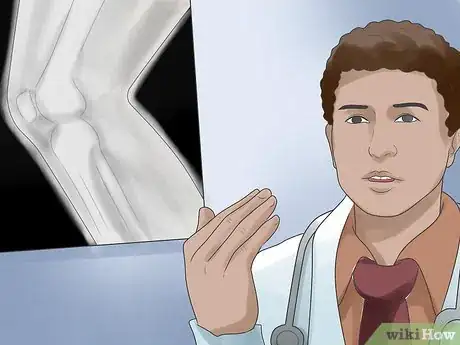

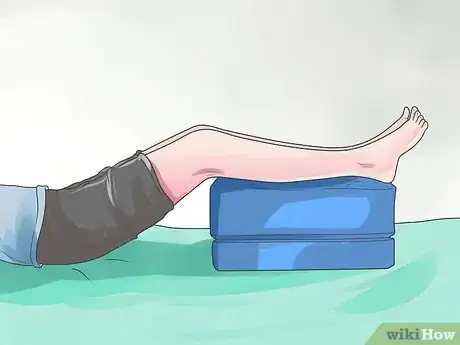
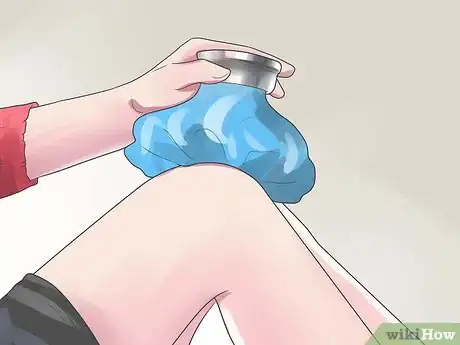
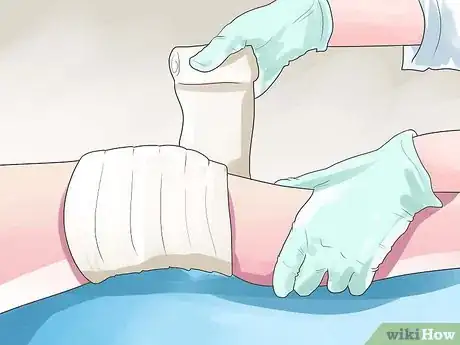
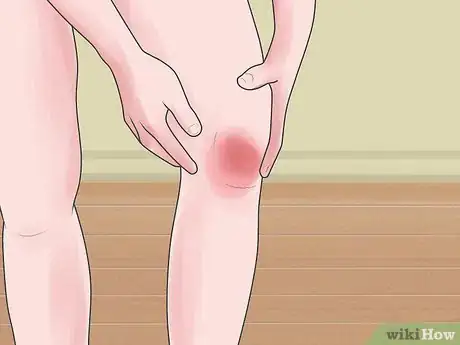
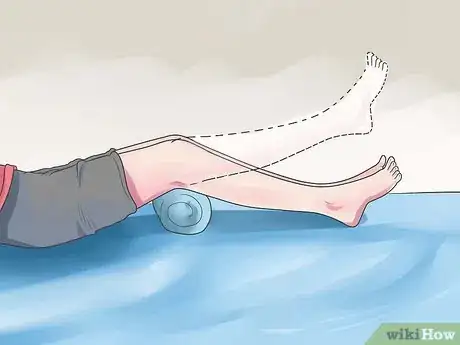
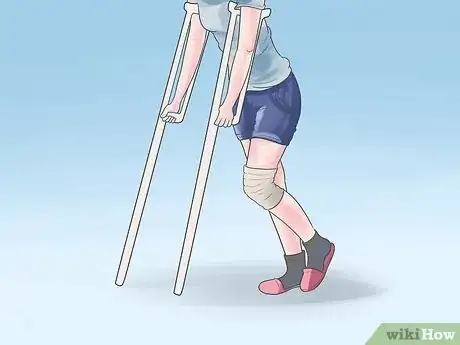


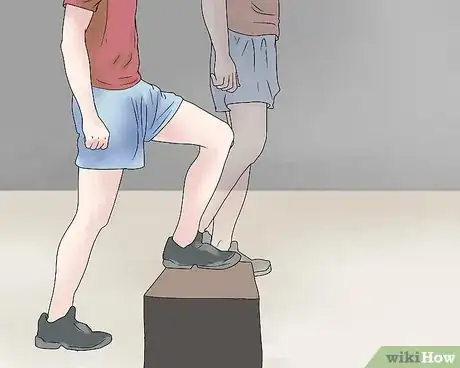
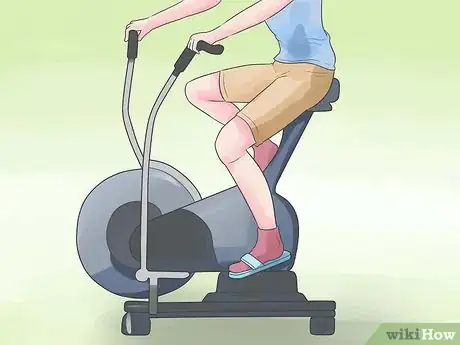

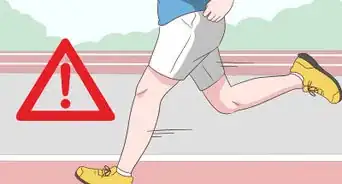





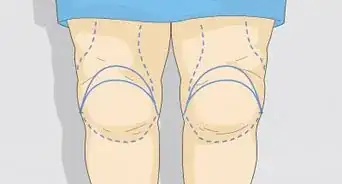

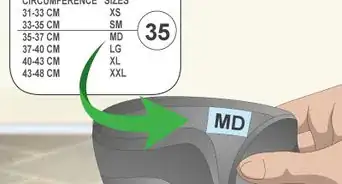

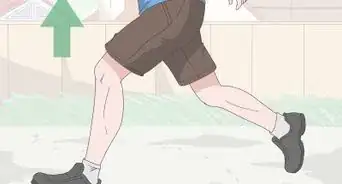

















































Medical Disclaimer
The content of this article is not intended to be a substitute for professional medical advice, examination, diagnosis, or treatment. You should always contact your doctor or other qualified healthcare professional before starting, changing, or stopping any kind of health treatment.
Read More...